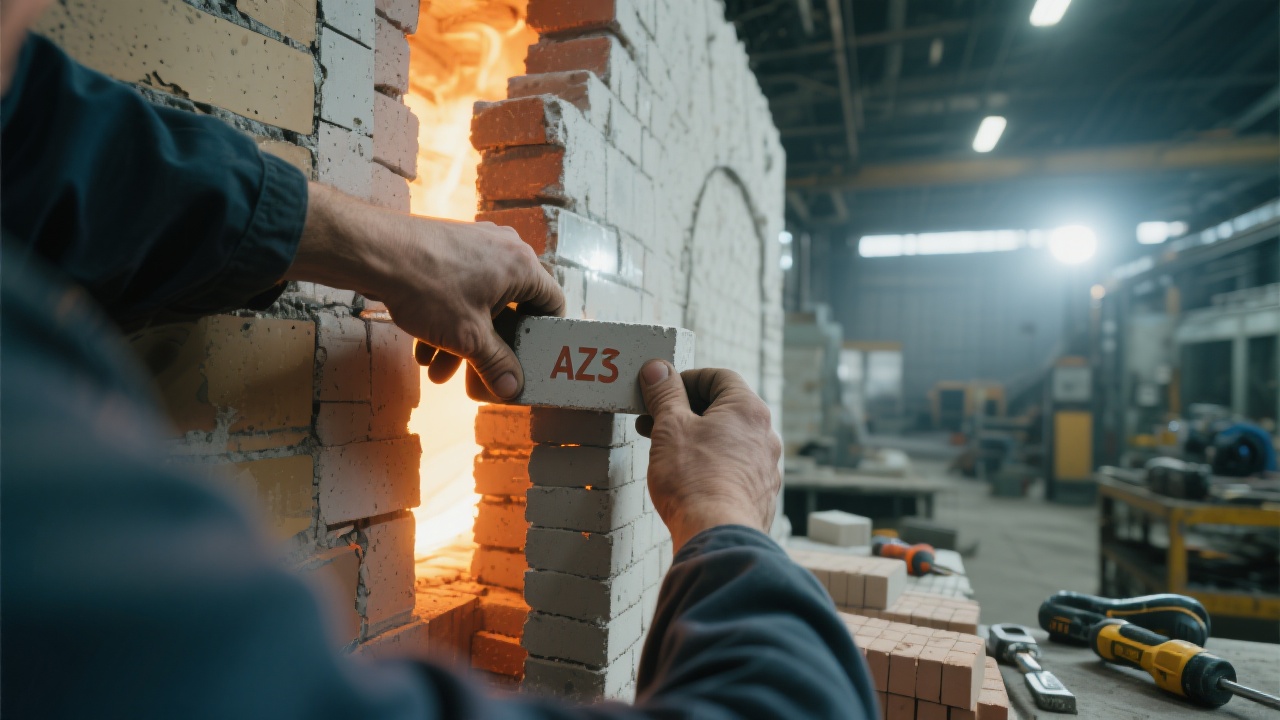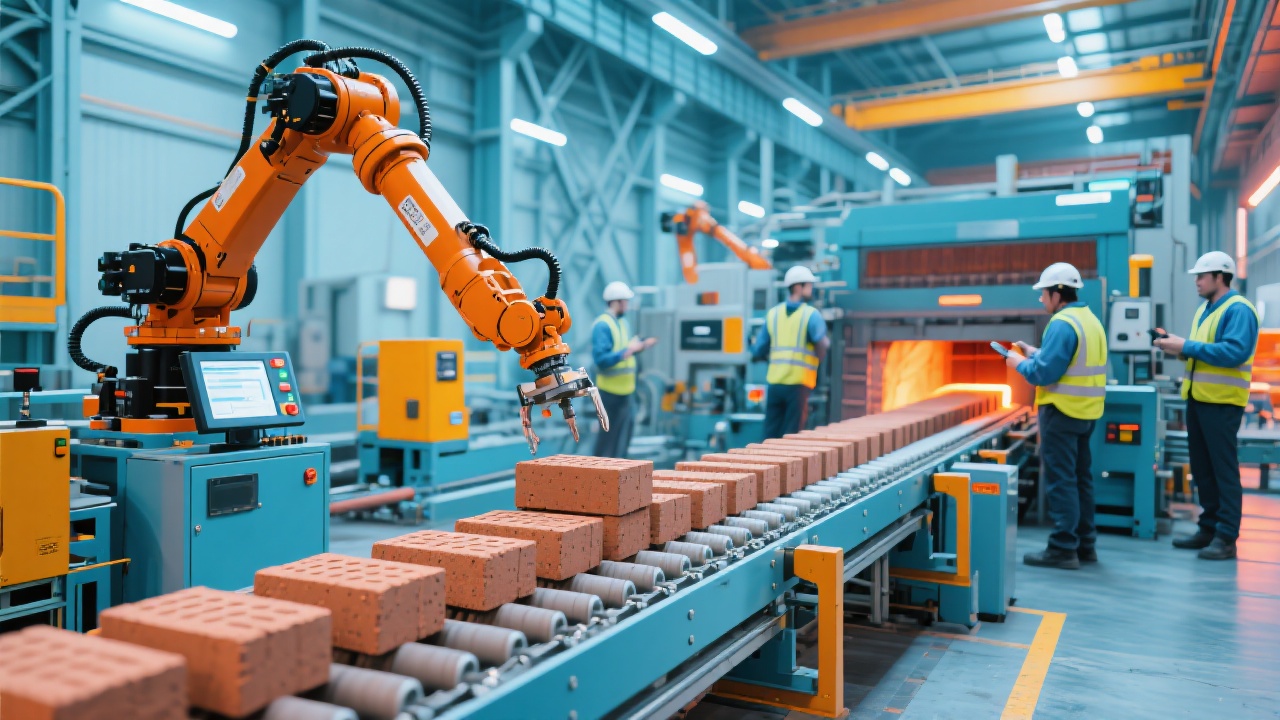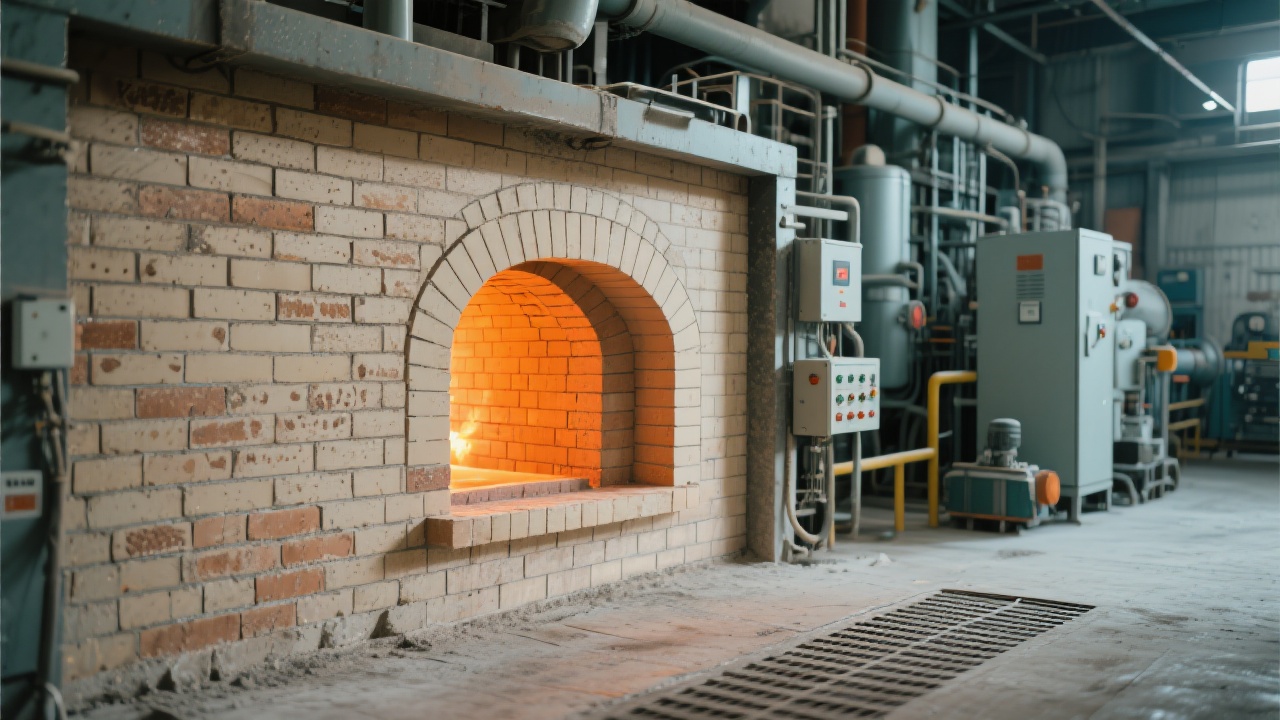
In the glass melting furnace industry, you, as mechanical engineers and factory operators, often face a tricky problem: the selection of refractory materials. Why do crystallization, spalling, or thermal cracking frequently occur in glass melting furnaces? This article will delve into these issues and provide you with effective solutions.
AZS cast blocks belong to the Al₂O₃ - ZrO₂ - SiO₂ system. They have unique physical and chemical properties. For example, they can resist high - temperature corrosion and penetration very well. The high - alumina and zirconia components form a dense structure at high temperatures, which acts as a barrier against the invasion of molten glass and other corrosive substances. In a high - temperature environment of over 1500°C, AZS cast blocks can maintain their structural integrity, while traditional materials may start to show signs of damage.

In the upper structure of the furnace, the temperature is relatively high, and there is a certain degree of thermal radiation. AZS blocks can be used to line the top and side walls here. Their high - temperature resistance can effectively prevent the top from collapsing due to high - temperature softening. For example, in a large - scale glass melting furnace, using AZS blocks in the upper structure can extend the service life of this part by about 2 - 3 years compared with traditional materials.
The side walls are in direct contact with the molten glass, so they are subject to strong corrosion and erosion. AZS blocks should be installed in a staggered pattern to ensure a tight fit and prevent the molten glass from seeping through the gaps. This can effectively reduce the risk of side - wall damage and improve the overall stability of the furnace.
The bottom of the trough bears the weight of the molten glass and is also affected by the flow of the molten glass. AZS blocks with high density and good wear resistance should be selected here. A proper installation slope can be designed to guide the flow of the molten glass and reduce the impact on the bottom blocks.
The top of the hopper is subject to the impact of raw materials and high - temperature flue gas. Using AZS blocks can enhance its resistance to impact and corrosion. For example, in a hopper where raw materials are fed at a high frequency, AZS blocks can reduce the frequency of top - repair work by about 50%.
When installing AZS blocks, stress concentration must be avoided. Stress concentration can lead to early failure of the blocks. For example, improper cutting or uneven installation can cause local stress to be too high. A common mistake is to use excessive force during installation, which can cause micro - cracks in the blocks. The correct method is to use appropriate installation tools and follow the installation sequence strictly. If necessary, use cushioning materials to reduce stress.

Regular temperature monitoring is crucial. By installing temperature sensors at key positions in the furnace, you can detect abnormal temperature changes in time. If the temperature at a certain position is too high, it may indicate that the refractory material is being damaged. Regular inspections should also be carried out, including visual inspections and non - destructive testing. Based on the inspection results, a reasonable replacement cycle should be determined. For example, for AZS blocks in high - wear areas, they should be replaced every 1 - 2 years, while those in relatively low - wear areas can be replaced every 3 - 4 years.
Let's look at a real - world case. A glass factory used traditional refractory materials in its melting furnace before. The furnace often had problems such as thermal cracking and crystallization, and the average service life of the furnace was only about 3 years. After replacing with AZS cast blocks, the frequency of these problems was significantly reduced, and the service life of the furnace was extended to about 5 - 6 years. This shows that AZS cast blocks can bring obvious benefits in terms of improving furnace performance and reducing maintenance costs.

By mastering these key technologies, you can significantly reduce the risk of furnace shutdown and let every AZS block发挥 its maximum value. Your furnace may also face similar problems. Do you want to know more about how to optimize the use of AZS blocks in your glass melting furnace? Click here to learn more solutions!

